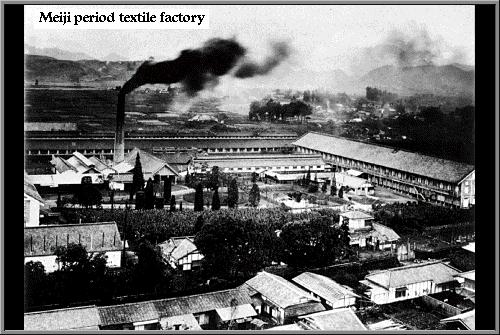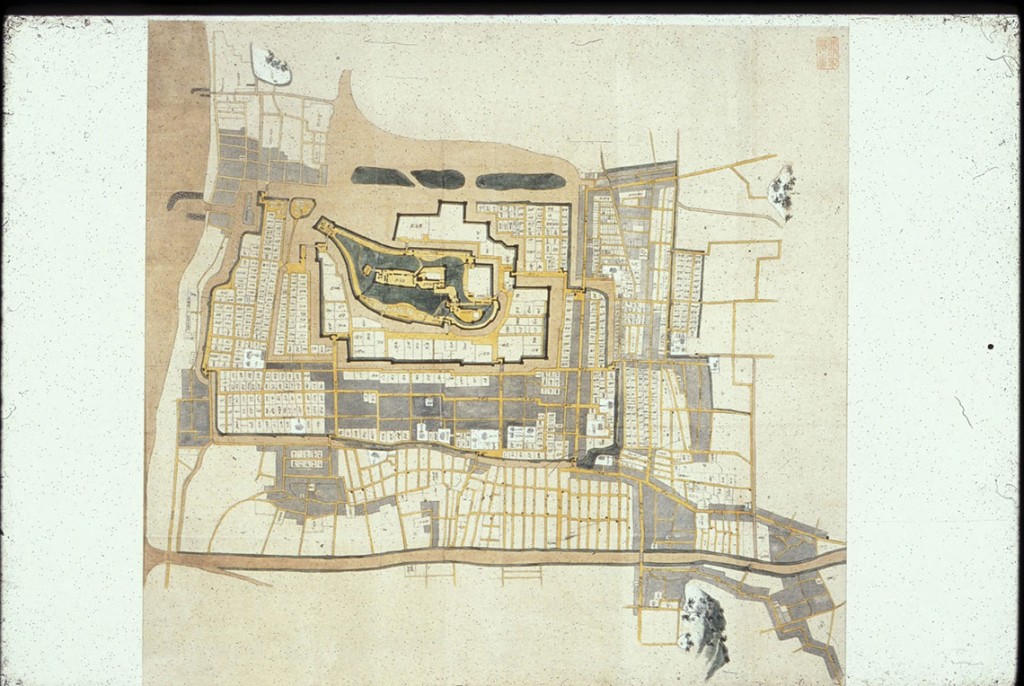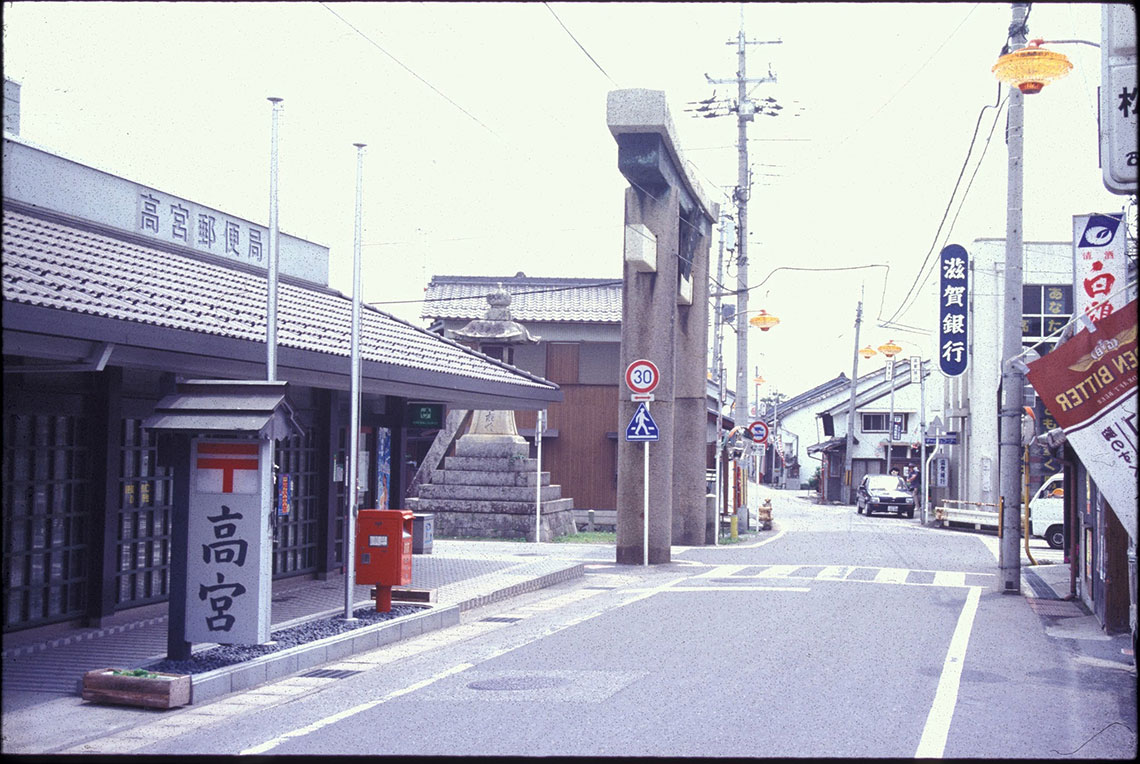In 1843 Takamiya was easily the largest of the post-towns in Omi Province (Shiga Prefecture), at least in terms of population size. The town was inhabited by some 3,500 people although, surprisingly perhaps, there were only twenty-three inns to serve travelers on the highway. This seems all the more remarkable because Takamiya (literally meaning ‘at the head of the shrine’) was at the head of the main approach road to Taga Taisha, one of the most important shrines in the country and closely connected to the Ise shrines. This meant pilgrims from all over the country would have passed through the town on their way to Taga (and then on to Ise), in addition to all the regular travelers on the Nakasendo. Indeed, the center of the townis still dominated by the large torii (Shinto ‘gateway’) which marks the entrance to the road to Taga Taisha, only a mile or so away.
The actual reason for Takamiya’s large size in the Edo period is that it was an industrial center as well as post-town. Located in an area already famed for textile production, the inhabitants of Takamiya became noted for their own weave of cotton fabric, known as ‘Takamiya cloth’. As the census of 1843 notes, the main activity for all the women of the town was weaving, while the men were engaged in the storage, distribution and sale of the cloth. Some evidence of the former popularity of Takamiya cloth, and its importance to the local economy, may be gleaned from the small (privately operated) rail station. Here there is an extensive area of sidings, with old trolleys and lifting equipment now rusting and derelict. Although textile production has moved to larger factory concerns and no longer seems carried on in the town itself, Takamiya has maintained a pride in its former glory and the town retains a delightful charm. Possibly the close proximity of Hikone, the second city of Shiga Prefecture, has helped ensure the survival of Takamiya as a vibrant ‘small town’ today.

old textile factories
Leaving Takamiya the Nakasendo continues to run parallel to Route 8, and a short distance away from it. After a few hundred yards an old stone signpost indicates a left turn into the castle town of Hikone. Although not officially on the Nakasendo, this was a variant which would have been taken by many travelers in the past who wished to stop-by a ‘large town’. Today this route is definitely worth a visit for the remarkable state of preservation of the buildings lining the old road into Hikone, which is itself one of the best preserved castle towns of old Japan.



